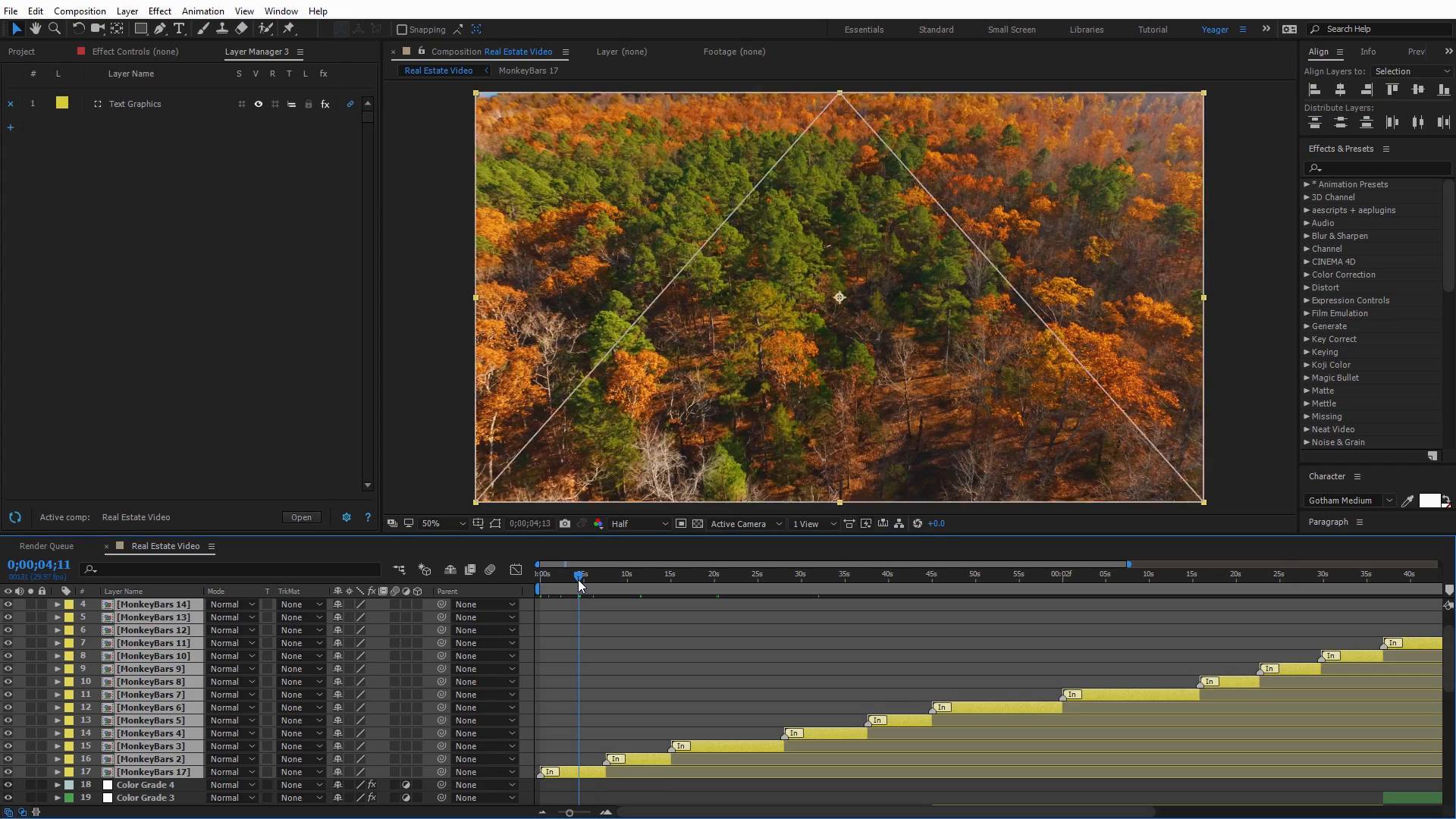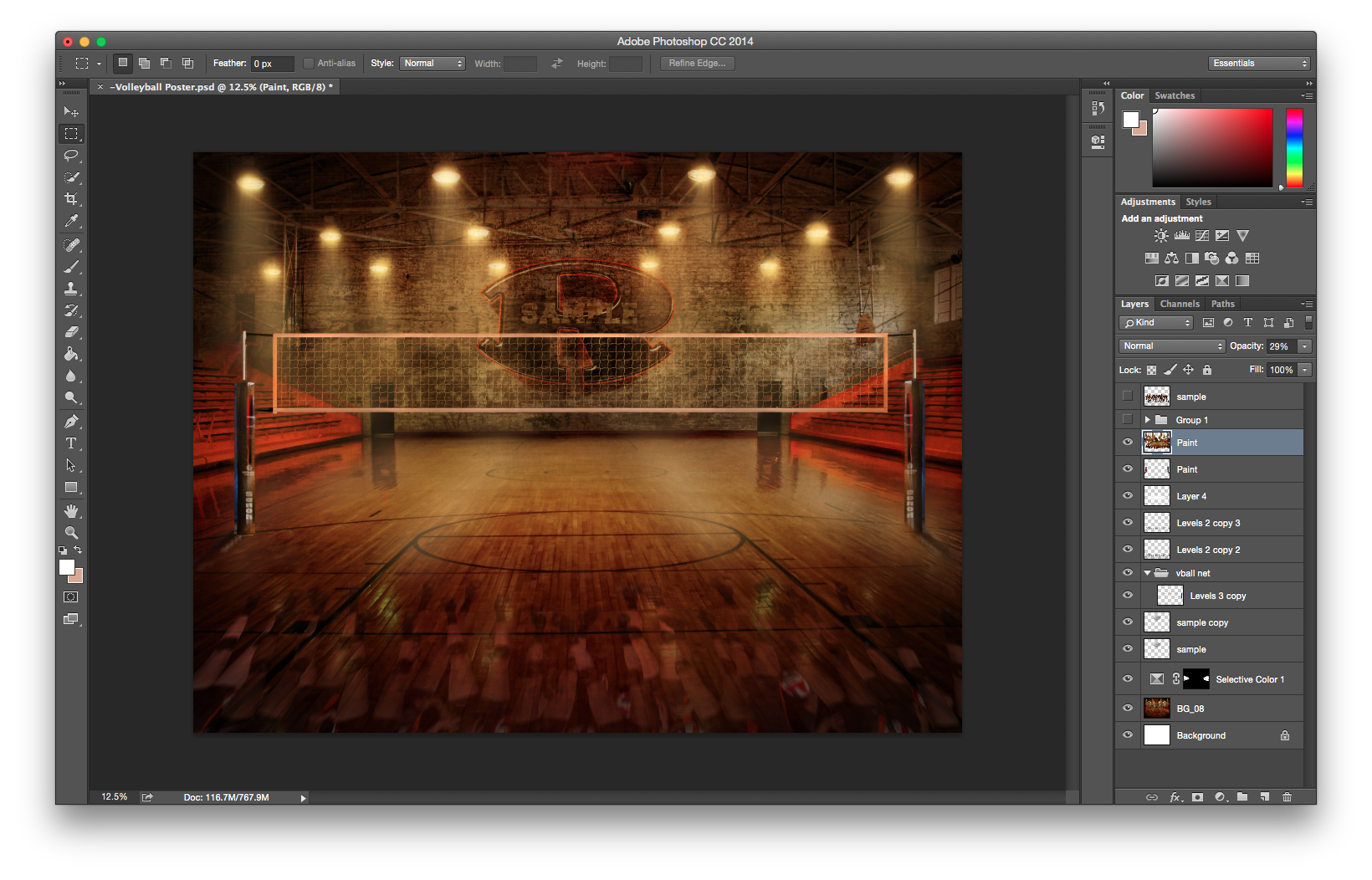

- #GROUP LAYERS AFTER EFFECTS HOW TO#
- #GROUP LAYERS AFTER EFFECTS FULL#
- #GROUP LAYERS AFTER EFFECTS FREE#
This method means you might need to do a bit more forethought in Photoshop, but gives you access to the full layer size after importing to After Effects. Some features, such as Photoshop’s Layer Masks, will actually affect the size of the bounding box After Effects will detect, so it’s important to make those decisions before proceeding with animation. Since we imported these at Layer Size, you’ll also notice that the layers each have their own individual bounding boxes, referring to the visible areas of the image layer, and each layer’s Anchor Point will sit at the center of that specific bounding box. This is the base from which you’ll build your animation. Importing a reference export of your Photoshop design is a great way to double-check yourself. Make sure to take some time once you’ve imported your layers to check that everything looks the way you want. In this case, our vignette isn’t feathered properly, but fortunately that’s an easy adjustment. You also may notice that some elements don’t import exactly the way they look in Photoshop.
#GROUP LAYERS AFTER EFFECTS FREE#
Remember how I said that After Effects has a lot of options? Well, there are several different ways to even just import a file! They all pretty much do the same thing, so you’re free to use whichever one you like.įirst up is the simplest path.
#GROUP LAYERS AFTER EFFECTS HOW TO#
How To Import Photoshop Files into After Effects So, we’ll be exploring the different methods you can use to bring your layered Photoshop file into After Effects, and why you might choose different ones at different times. We’ll be covering those techniques in another upcoming tutorial, so for today, enjoy this nicely-prepared file in case you’d like to follow along!Īfter Effects is an application with a lot of options, which means that you might have several different ways to approach something … and which one is best may depend on what you’re doing. Knowing how to properly set up your designs in Photoshop is crucial for keeping the import process smooth and easy. The techniques we’ll be covering should work with pretty much anything you can create in the recent versions of Photoshop and After Effects.

So remember, when it comes to manipulating the contents of groups, the Layers panel is your best friend.Photoshop is a great place to create designs you can then animate in After Effects. Then you can drag in the items you actually want in the subgroup, and finally delete the dummy objects. Or you could create a dummy group of two disposable objects and drag it into the main group ( just to create a subgroup structure). You can’t simply select objects inside a group and press Command/Ctrl+G to make a subgroup. Instead, you could either drag those objects out of the group, group them, and then drag them back into the group.

You can also easily take a group and drag it inside another group in the Layers panel, the same way as shown above.īut if you want to create a subgroup from objects in an existing group, then you have to get a little creative. If you want a group consisting of existing groups, simply select the groups and group them. Drag it in the Layers panel so the thick black line appears outside the group, then release the mouse button.Ĭreating a group nested inside another group can be a little trickier, depending on what you’re working with and the group structure you want to end up with. You can also remove an object from a group the same way. A thick black line indicates where it will be in the stacking order. In the Layers panel, click and drag the new object and drop in into the group. This kind of nested grouping might be fine for your purposes, but for a simpler arrangement, try this: Your first idea might be to just select everything and press Command/Ctrl+G again.īut if you do that, what you really have done is created a new group consisting of the and the original. Now let’s add another object to the group. You will notice that there is a new sublayer called and if you click the triangle beside it, you’ll reveal its sublayers. With the three objects selected, press Command/Ctrl+G to group the objects. Tip: you can change the names that appear in the Layers panel by clicking on them, pausing, and then clicking again. To the left of the layer name is a triangle that you can click to reveal the layer’s contents. Then open the Layers panel. By default, you will see just one layer, called “Layer 1”. Start with any number of objects in your layout (in this example, I’m using a polygon, a circle, and a square). I must admit that I didn’t know about this technique before I saw it on the forums, so all credit goes to Uwe Laubender. And sometimes I even find a brilliant InDesign “secret,” like the following one which will allow you to easily control the structure of groups. As a frequent visitor to the Adobe InDesign User Forums, I often come across topics that make for interesting discussions.


 0 kommentar(er)
0 kommentar(er)
